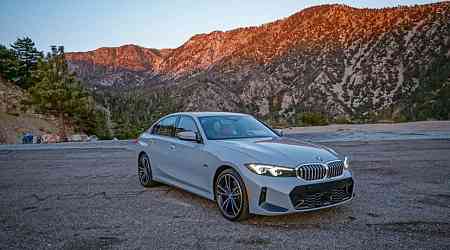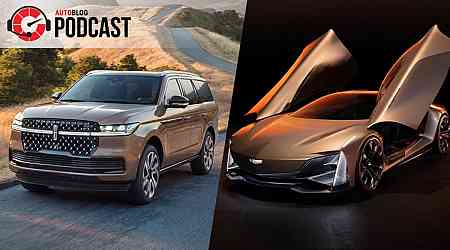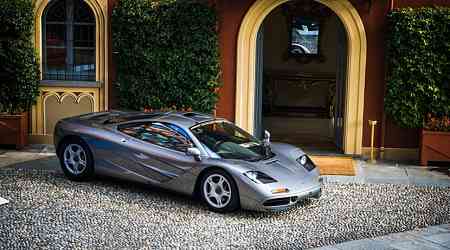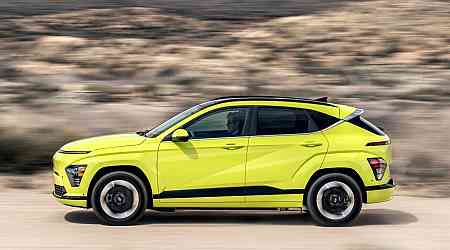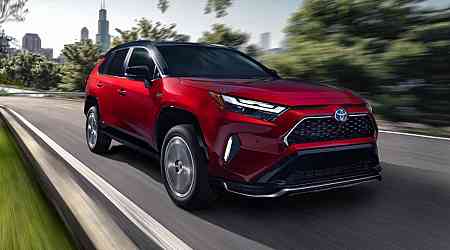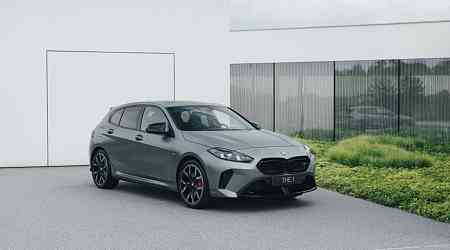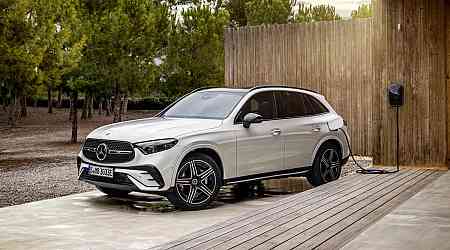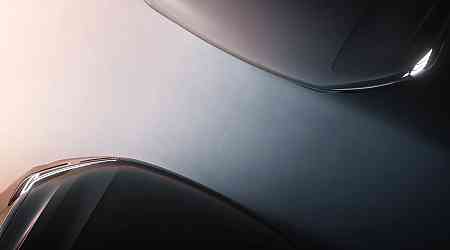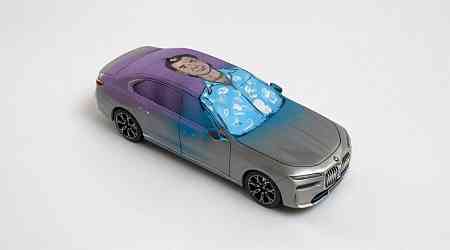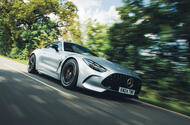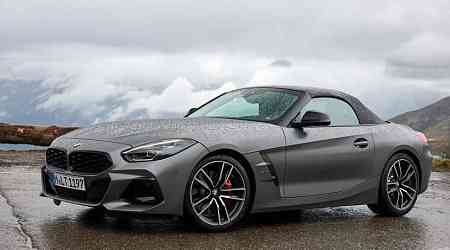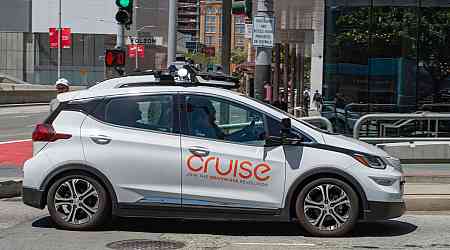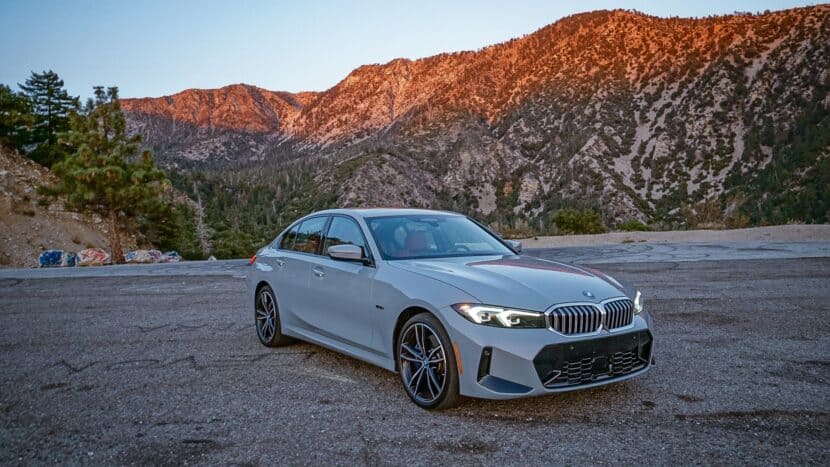STUTTGART, Germany -- Five decades ago, Porsche opened one of the most significant chapters of its history: it launched the original 911 Turbo. Genuinely racing-inspired, the first Turbo still influences Porsche’s range in 2024.
The turbo emerged as a powerful tool in the quest for more power, and the Turbo name became one of the most powerful tools in Porsche’s marketing arsenal. Other companies turbocharged their cars as well: BMW presented the 2002 Turbo at the 1973 Frankfurt auto show — about a month before the oil crisis — and Saab played a major role bumping the turbo toward the mainstream with the 99 and, later, the original 900. In the 1980s, a tsunami of hot hatches with “TURBO” logos and decals swept across Europe. And yet, it’s Porsche that’s most commonly associated with the Turbo name.
Born on the track
Thomas Krickelberg, who joined Porsche in 1990 and worked under Hans Mezger, told me Porsche chose to experiment with turbocharging because the technology uses waste energy; exhaust gases spin the turbocharger’s turbine. In contrast, a supercharger requires horsepower to generate horsepower because it’s powered by a crankshaft-driven belt. Porsche never seriously considered supercharging for the 911, Krickelberg said. Besides, the brand’s racing division already had a great deal of experience with turbocharged engines: the 917/10 Turbo kicked off the turbo era with a 1,000-horsepower flat-12. It made its competition debut in the 1972 season of Can-Am and won six out of nine races that year. Two years later, the 911 Carrera RSR Turbo 2.1 finished second overall at the 24 Hours of Le Mans.
For a brand like Porsche, which is rooted in racing, applying a race-winning technology to street cars made perfect sense. Besides, the brand wanted to move up a notch or two in the industry’s pecking order: Krickelberg cited the Lamborghini Countach as one of the reasons a quicker 911 was needed. Engineers seemed unfazed by the idea of trying to outrun the Italians with half as many cylinders.
Louise Piëch, Ferdinand Porsche’s granddaughter, received the first 911 Turbo ever built for her 70th birthday on August 29, 1974. It’s a one-off: It features standard-width rear-wheel arches and a 2.7-liter turbocharged flat-six rated at 236 hp. The production model wasn’t far behind.
Introduced at the 1974 Paris auto show, the original 911 Turbo used a 3.0-liter turbocharged flat-six that made 256 hp at 4,000 rpm. It took 5.5 seconds to reach 62 mph from a stop, and it had a top speed of over 155 mph. At launch, it was the fastest street-legal car sold in Germany. For context, in 1974 the base 911 shipped with a 2.7-liter flat-six rated at 143 hp, while the same engine with a higher compression ratio and other enhancements in the 911 S made 167 hp.
Porsche didn’t merely bolt a turbo to the flat-six and call it a day. It made so many changes during the development process that the 911 Turbo received its own internal designation: 930. Beyond the engine modifications and the now-emblematic fixed whale-tail rear spoiler, the Turbo stood out from the naturally-aspirated 911 with wider rear-wheel arches, firmer springs, and thicker anti-roll bars.
Built in 1975, the example I’m driving comes from the Porsche collection. It’s fascinating to notice it’s not all that different than a naturally-aspirated 1970s 911 when you first hop in. The doors shut with the same “thump!” and you sit low, with the same view over the long, sloping hood — the punched-out rear wheel arches take up more space in the door mirrors, however. In the days before Sport Chrono packages, carbon fiber bucket seats, and Turbonite, performance was the main differentiator.


While the naturally-aspirated 911 was offered with a five-speed manual transmission, the Turbo was exclusively available with a four-speed stick until 1989, its final year on the market. Porsche pulled this off by making the gears incredibly long: you can just about reach 60 mph in first! This says a lot about what the original Turbo is like to drive. You need to wring it out to get what it’s all about.
Turbo lag defines this car. It would be a stunning display of historical amnesia not to point out that the 930-generation 911 Turbo earned the nickname Widow Maker, due in part to how the turbo delivers boost. It’s like an on-off switch, which takes some getting used to in a 50-year-old car that’s quicker to 60 mph than a new Volkswagen Golf GTI. The “BAM!” moment happens at almost exactly 4,000 rpm — it feels like a second engine turns on, or like you’ve activated a mushroom in Mario Kart. It’s seriously impressive even by modern standards; it was epoch-shaping in the 1970s.
Like most older cars, the original 911 Turbo gets even better when you find its groove. It’s a joy to drive, both in spite of the turbo lag and because of the turbo lag. It blazed the path that every 911 Turbo since, including the current 992-generation car, has followed. On a secondary level, it forever changed the public’s perception of how a 911 could perform and what Porsche was capable of.
Turbos for everyone
Letting the 911 hog the turbo wasn’t in Porsche’s best interest. The promise of speed was one hell of a sales pitch. It wasn’t far-fetched to imagine that someone who couldn’t afford a 911 Turbo might be tempted by a Turbo variant of a cheaper car — and that’s just what the brand had in the pipeline.
Additionally, the socioeconomic context of the 1970s shaped the automotive landscape in ways that can’t be understated. Gasoline was expensive, and the future was uncertain at best. Forced induction made more sense than an extra liter or two of displacement in the quest for top-speed supremacy.
The original 911 Turbo disappeared from our market after the 1979 model year (its comeback a couple of years later is a different story for a different time), but 1980 brought Porsche’s second series-produced Turbo model: the 924. The coupe used the same basic water-cooled, 2.0-liter four-cylinder engine as the naturally-aspirated model, but forced induction gave horsepower a much-needed boost from 110 to 143.


The 924 evolved into the 944, gaining a more pronounced whiff of Porsche-ness in the process, and it took the Turbo with it. Launched for 1986, the 944 Turbo used a 2.5-liter four-cylinder engine rated at 217 hp (up from 143 in the naturally-aspirated car).
Turbo lag, which Krickelberg said engineers considered a “critical issue,” is far less noticeable in the 944 Turbo than in the 911 Turbo. It’s there, but it takes you by surprise instead of biting you in the ass. Factor in the near-perfect 50:50 front-rear weight distribution, which is made possible by a rear-mounted transaxle, and the 944 Turbo is more balanced than the 911 Turbo. You can judge whether it’s sportier or better overall by the seat of your pants — that’s a matter of taste. What’s clear is that the 944 Turbo was marketed as (and, crucially, accepted as) the next logical step in the Turbo story.
And, like the 911 Turbo, its approach to performance is a subtle one. It features a Turbo-specific body kit but it’s fairly low-key, and from the driver’s seat it’s very much like a 944. It’s not out to convince you it belongs on a race track. It’s relatively quiet, reasonably comfortable and surprisingly luxurious.

Modernizing the Turbo
Turbo technology evolved quickly in the 1980s and the 1990s. The limited-edition 959 — one of the predecessors of the modern-day hypercar — built between 1986 and 1993 used a twin-turbocharged flat-six, and this system later appeared on the 993-generation 911 Turbo launched in 1995. Variable turbine technology, which helps keep turbo lag in check without sacrificing power, made its debut on the 997-generation 911 Turbo launched in 2006 and later ended up on the Le Mans-winning 919 Hybrid.
Most of the models introduced in the 1990s and the 2000s, including the original Cayenne and the first-generation Panamera, spawned a Turbo model. By this point, Turbo was a well-established term in Porsche-speak.
Although hugely controversial at launch, the first Cayenne saved Porsche from an unsavory fate. The company didn’t blush when it put the “Turbo” and “Turbo S” nameplates on the big SUV’s hatch, because it knew how to make both variants credible. Released in 2002 on the European market, the Turbo received a twin-turbocharged evolution of the new, 4.5-liter V8 rated at 443 hp and 455 pound-feet of torque, which was enough for a 165-mph top speed. This was unheard of in the burgeoning SUV segment of the early 2000s. One of the original Cayenne Turbo’s main rivals was the Mercedes-Benz ML55 AMG, whose 342-hp, 5.4-liter V8 delivered a top speed of 141 mph.
Launched in 2006, the Cayenne Turbo S put 521 hp and 531 lb-ft of torque under the driver’s right foot from another evolution of the twin-turbocharged 4.5-liter V8. It went on sale as the second-most-powerful street-legal Porsche model ever released (the 603-hp Carrera GT held on to the crown), though at approximately 5,191 pounds, it was also one of the brand’s heaviest.
The power and the weight both manifest themselves in different ways, sometimes simultaneously, in the Cayenne Turbo S. It’s not far-fetched to describe its 5.2-second sprint from zero to 62 mph as sports car-like. Context is key here: this big SUV could keep up with the lower-end 911s of its era in a straight line. The adjustable air suspension system and the permanent, 62%-rear-biased all-wheel-drive system can’t hide the weight or mask the high center of gravity around a sharp turn, though.
It’s not that it handles poorly; it boasts excellent handling all things considered. It’s a matter of habit. You need to get used to the body lean and the relatively slow steering before you can drive it the way Porsche intended. In a way, it’s like the original 911 Turbo, which also came standard with a learning curve. You can count on the biggest braking system Porsche had released to that point to keep you safe.
Models like the Turbo S helped convince enthusiasts the Cayenne was a true Porsche, which in turn boosted sales, and the company funneled the revenue into its research and development team. In full expansion, Porsche turned its attention to a segment it had hovered around for decades but never managed to enter: sedans. The first Panamera made its debut at the 2009 Shanghai Auto Show, a hint at where Porsche hoped to increase sales, and the range included a Turbo from the get-go.
Engineers weren’t chasing superlatives or trying to weave in parts of Porsche’s racing heritage with the Panamera Turbo. The goal was, in brief, to create a business jet for the road. In addition to a list of standard and optional features that was seemingly longer than Moby Dick, the sedan received a twin-turbocharged 4.8-liter V8 good for 493 hp. Of the cars I drove in Germany, the original Panamera Turbo delivers the smoothest and most linear acceleration. It’s tamer than a 911 Turbo from the same era, for example, but the gap in performance between the Panamera Turbo and the naturally aspirated models (which I’m old enough to have driven when they were new … time flies!) is just massive. From the way it accelerates to the way it brakes, there’s no mistaking it for anything other than a Turbo-badged Porsche. And, here again, there was nothing else quite like it at the time.

Turbo in the 2020s
Decades of carefully curating the Turbo name, both technologically and visually, made it pretty much a Porsche subsidiary. There’s the performance: the original 911 Turbo was positioned as the quickest and — significantly — the most advanced model in the range. This logic later trickled down to other cars, including the 924 and the 944. There’s also the styling: specific design details set the Turbo models apart from their naturally aspirated counterparts. As is generally the case with Porsche, the changes aren’t merely aesthetic. The 911 Turbo’s huge rear spoiler, which German regulators nearly killed, provided the downforce that kept the back wheels in contact with the ground at high speeds.
And, 50 years later, there’s also the heritage. Five decades of history can’t be bought from a rival or made up by a clever advertising agency. Performance, styling, and heritage make Porsche’s modern-day Turbo models special. Enthusiasts who order a Porsche Turbo know exactly what they’re getting.
If you want proof of the Turbo name’s staying power, look no further than the 991.2-generation 911 unveiled at the 2015 Frankfurt auto show. Turbocharging would now be standard on most variants, including the base 911 Carrera, with downsized, flat-six engines utilizing forced induction to meet ever-stricter emissions regulations around the globe. Despite this, the Turbo nameplate remained and its identity wasn’t diluted. This is almost unheard of: the “ABS” and “Fuel-Injection” emblems that festooned cars in the 1980s disappeared when every car got ABS and fuel injection. Remember the “5-Speed” emblems?
Even electrification couldn’t kill the Turbo. Porsche sells Turbo- and Turbo S-branded variants of the Taycan and a flagship Turbo version of the new Macan. None of these cars have anything resembling a turbo, but they’re shockingly quick, and they represent the pinnacle of the available technology.



















